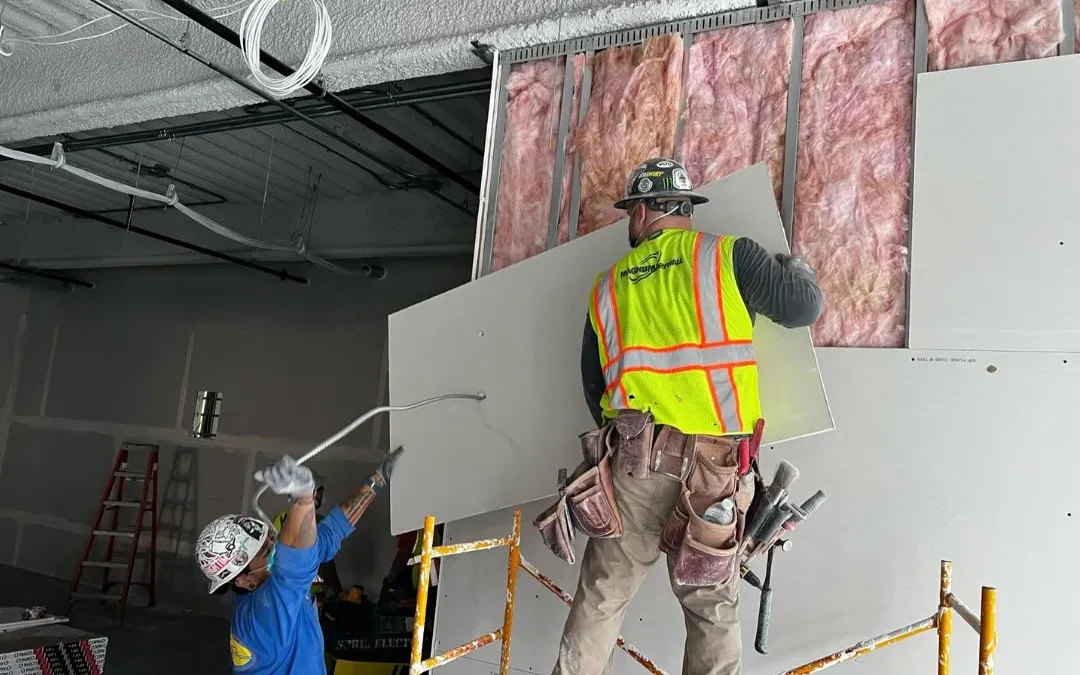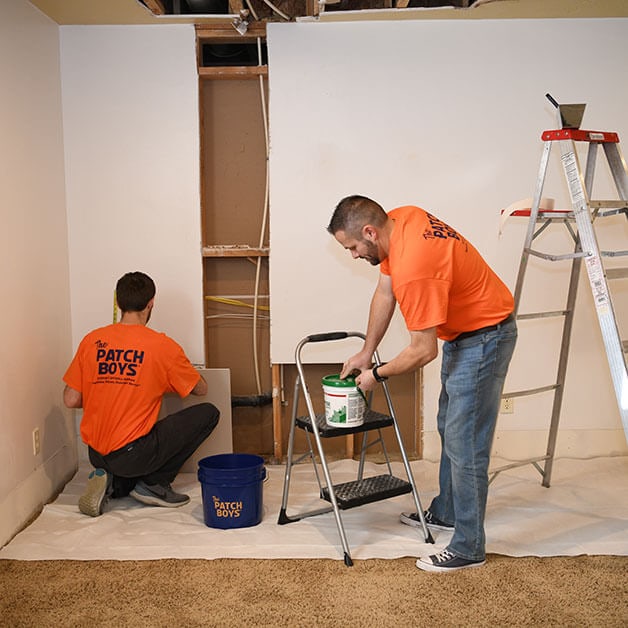Reliable Drywall Repair Techniques to Restore Your Wall surfaces
Reliable Drywall Repair Techniques to Restore Your Wall surfaces
Blog Article
Complete Guide to Reliable and Trusted Drywall Installment
Drywall setup is a critical component of any type of construction or renovation project, demanding a careful technique to guarantee both performance and dependability. It is necessary to check out the nuances of each action in the procedure, as they jointly contribute to the overall success of the drywall installment.
Essential Tools for Drywalling
When embarking on a drywall installation task, having the right devices is critical for achieving a professional surface. Vital tools consist of a drywall knife, measuring tape, and a T-square, which are essential for exact dimensions and smooth cuts. A drywall lift is additionally extremely valuable, particularly for ceiling installments, enabling easier handling of heavy panels.
For attaching the drywall, a cordless drill and drywall screws are needed. The drill ought to be outfitted with a drywall bit to ensure effectiveness and accuracy. Additionally, a crucial device is the drywall saw, which assists in reducing about other barriers and electrical outlets.

Moreover, protective gear such as shatterproof glass and a dust mask are vital to make sure personal safety and security during the installation process. Making use of the right tools not just improves the quality of the installment yet additionally enhances the process, making the project much more reliable general.
Preparing the Space

Following, evaluate the problem of the ceilings and wall surfaces. Repair any existing damage, such as holes, splits, or peeling paint, to ensure a smooth and even surface area for drywall application. Furthermore, look for electric outlets, pipes lines, and HVAC ducts, noting their areas to stay clear of difficulties during setup.
It is also critical to measure the area properly, identifying the dimensions of the walls and ceilings to compute the appropriate amount of drywall required. Develop a detailed strategy that consists of the layout and positioning of the drywall panels.
Setup Strategies
Efficient installment techniques are important for attaining a professional finish in drywall projects. Correct dimension and more cutting of drywall sheets are fundamental steps. Always determine the wall surface area properly, allowing for any switches or outlets. Make use of an utility knife for clean cuts, scoring the paper face and snapping the board along the racked up line.
When hanging drywall, begin with the leading and job downward, ensuring that the long side of the board is vertical to the framework. Safeguard the sheets with screws instead of nails, which offer higher holding power and decrease the danger of popping. Area screws every 12 inches along the edges and every 16 inches in the field of the board.
For corners, use corner grains special info to attain sharp, tidy sides. When setting up on ceilings, make use of a drywall lift or have a companion assist in holding the sheets in position (drywall contractor). Maintain a gap of concerning 1/4 inch above the floor and ceiling to accommodate development and tightening
Ending Up Touches

Begin by using joint tape over the joints. This can be either paper or fiberglass fit together tape, with paper being favored for its toughness. As soon as the tape is in area, it's time to use the initial layer of joint substance, also called mud. Utilize a 10 to 12-inch taping knife to spread the substance uniformly over the taped seams, feathering the sides to mix with the surrounding drywall.
Allow the compound to dry thoroughly, normally 24 hr. After drying, sand the surface gently with fine-grit sandpaper to get rid of any kind of blemishes. sheetrock repair fort worth. Repeat the mudding and fining sand process, usually 2 to 3 layers, ensuring each layer is flush and smooth with the drywall surface
Usual Errors to Stay Clear Of
Numerous do it yourself fanatics experience risks during drywall setup that can endanger the outcomes. One typical error is falling short to properly determine and reduce drywall sheets. Incorrect cuts can cause voids and unequal joints, making ending up more labor-intensive. Additionally, overlooking to surprise joints can create powerlessness in the wall, leading to possible sagging or splitting gradually.
Another frequent error is incorrect fastening. Using too couple of screws or nails can lead to loosened drywall, while overdriving bolts can cause the paper to tear, deteriorating the framework. It's vital to maintain consistent spacing, normally every 16 inches, and to ensure that bolts are flush with the surface.
Additionally, not resolving wetness issues before installation can cause mold and mildew development and architectural damages. Constantly analyze the setting and use moisture-resistant drywall in high-humidity areas.
Final Thought
Trustworthy and reliable drywall installation requires careful focus to information throughout the resource process. Preventing usual blunders further contributes to an expert outcome, highlighting the relevance of accuracy and strategy in effective drywall tasks.
It is important to explore the subtleties of each step in the process, as they jointly contribute to the overall success of the drywall setup.When getting started on a drywall installation project, having the right tools is crucial for achieving a professional coating.For fastening the drywall, a cordless drill and drywall screws are required.Correctly preparing the area is vital for a successful drywall setup.Reliable installation techniques are critical for achieving a specialist coating in drywall tasks.
Report this page